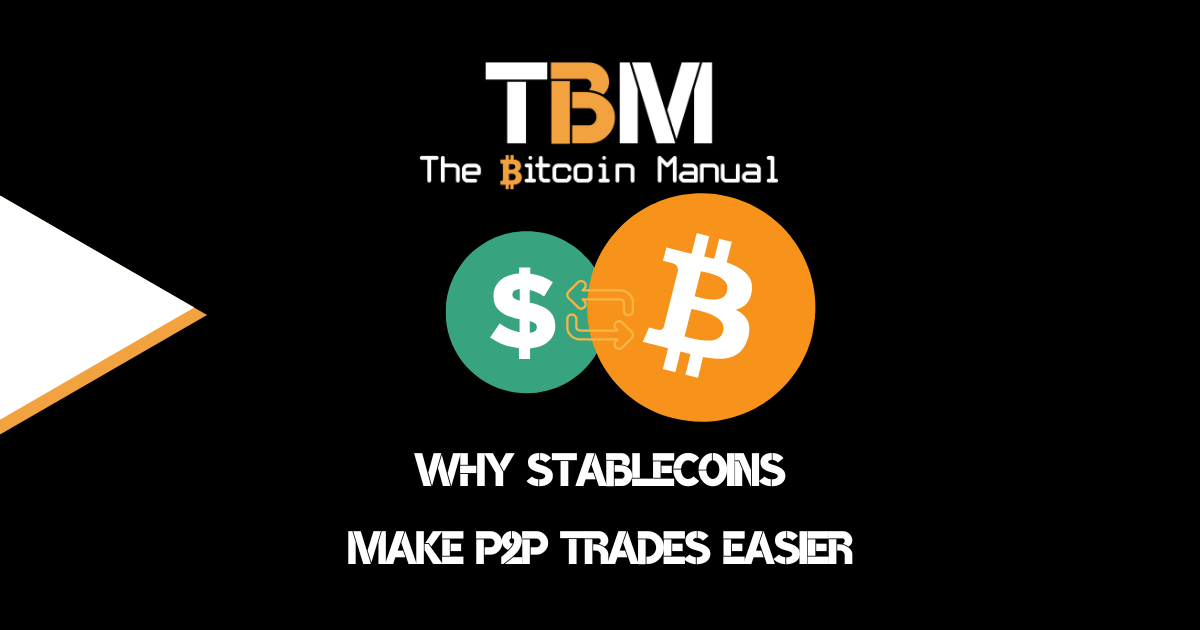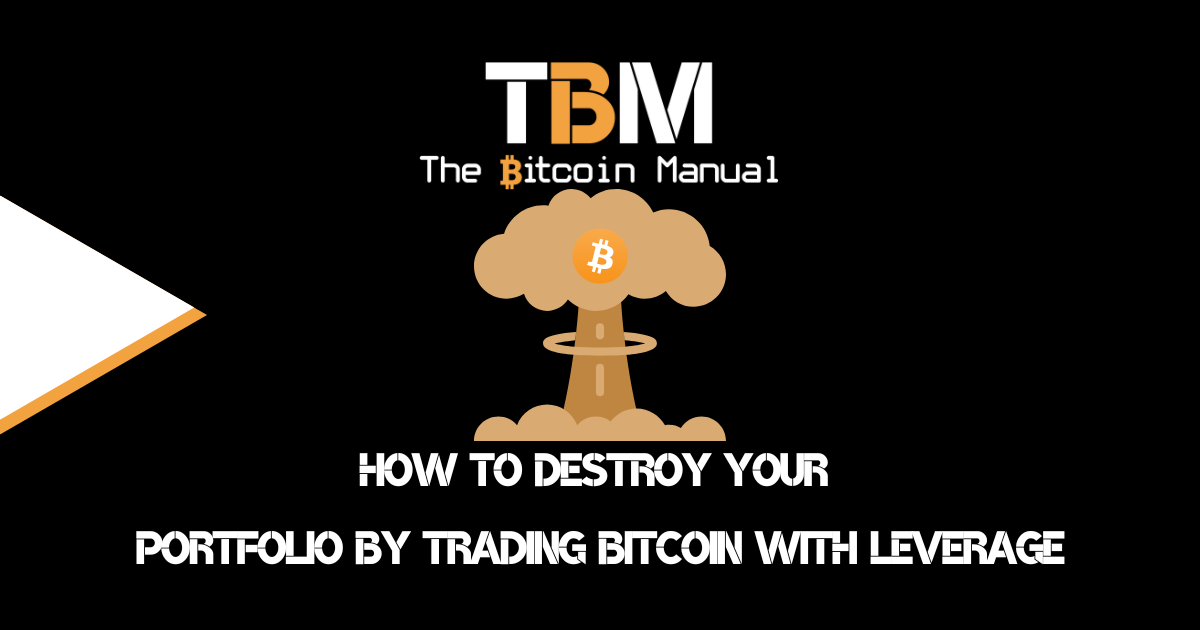Acquiring Bitcoin through peer-to-peer (P2P) trading was the default method of acquiring the asset if you didn’t have your own mining set up back in the day, but as the market grew, new entrants couldn’t resist the scale, ease and liquidity that comes with centralisation.
Today, the most common method of acquiring Bitcoin is to find a centralised exchange, KYC’ing your account, and you can start buying and selling Bitcoin in your local currency.
I get the appeal; it’s simple: you can buy and sell at amounts you’re comfortable with, the settlement is quick, and for the majority of retail traders, if not all, there’s ample liquidity to settle their orders.
Centralised exchanges are big business, clearing billions of trades per day, and their price feeds are often the reference rate for the price of Bitcoin; that’s just how important they’ve become, despite a few of them blowing up along the way.
P2P has taken somewhat of a backseat but remains an option for users who wish to buy and sell Bitcoin directly with each other and avoid KYC. While this method can offer flexibility and privacy, it’s not without its challenges.
One of the most pressing issues is the mismatch in position sizes, complexity, liquidity, and scammers, coupled with difficulties in fiat settlement options and varying settlement times.
The Mismatch of Orders
One of the main hurdles in P2P trading is the disparity in position sizes between buyers and sellers. Buyers often seek to purchase varying amounts of Bitcoin, depending on their investment strategy, while sellers may only wish to sell specific amounts, sometimes influenced by their own financial needs or market outlook.
This mismatch can lead to several complications:
- Negotiation Delays: Parties may spend time negotiating terms only to find their position sizes don’t align, leading to frustration.
- Increased Transaction Time: When position sizes don’t match, additional back-and-forth may be required, elongating the trading process.
- Market Inefficiencies: Mismatched positions can contribute to market inefficiencies, making it harder for users to quickly find counterparties for their desired trades.
- Position sizes: If you want to purchase $100 worth of Bitcoin and all sellers on the P2P order book only want to sell at $200 size orders, you’re priced out of the market.
Premiums on P2P
Very few traders filling up the sell side of the order book on P2P exchanges are doing so with the idea of breaking even; they are there to make money, and depending on the risk they are taking, the fees in the fiat rail they’re using and their level of urgency to sell, it will all be factored into the premium.
When you purchase on a CEX, you’ll be given a spot price for you to smash, but you won’t think too deeply about it. With P2P, you’ll have to look at the premium each seller is charging. This can range from -5 % to as high as 100% above the current market price.
If you’re price sensitive, this can put you off P2P trading because you could give up privacy and get more sats at your local CEX instead.
Fiat Settlement Options
Another significant challenge in P2P Bitcoin trading is the limited fiat settlement options. While many traders prefer to transact using local currencies, not all P2P platforms support a wide range of fiat currencies or payment methods.
Key issues include:
- Lack of Local Payment Methods: In some regions, users may not have access to popular payment methods, limiting their ability to trade.
- High Fees: Certain fiat settlement methods can incur high transaction fees, reducing the overall value of the trade for both parties.
- Fraud Risks: Trading directly with fiat currency increases the potential for scams, as buyers and sellers may not have a trusted intermediary.
Settlement Times
Settlement times also pose a challenge in P2P trading.
In many cases, the time it takes for funds to transfer from one party to another can vary significantly based on the chosen payment method. For instance, bank transfers can take days, while services like PayPal may offer quicker options but come with their own risks and fees.
This variability can lead to:
- Volatility Exposure: The longer the settlement time, the more exposed both parties are to price volatility in the Bitcoin market.
- Transaction Confusion: Users may lose track of their trades if payment processing takes longer than anticipated, leading to misunderstandings and disputes.
International order books
P2P order books can become sparse, especially when dealing with non-USD trades. If you’re trying to swap Malawian Kwachas to Bitcoin on the regular, good luck finding a counterparty; there are just not that many people interested in swapping confetti for Bitcoin.
So you’re faced with the reality of acquiring dollars, which is more challenging and costly depending on your location. But there’s still one problem: many of the dollar options available outside the US aren’t exactly interoperable with the dollars from another country or fintech app.
If I purchase US dollars from a South African banking app, I can’t exactly send it to a PayPal or Venmo user in the US; now, can I?
So you’re back to dealing with a different set of constraints.
Stablecoins have emerged as a stopgap solution to many of the challenges inherent in P2P Bitcoin trading. Stablecoins can bridge the gap between traditional finance and the Bitcoin markets by pegging their value to the US dollar.
If you’re able to swap out your local currency into a stablecoin, you now automatically have access to a wider range of P2P order books and traders who would happily trade with you and even access to lower premiums since you’re dealing with relatively better currency and using rails that can settle as fast as Bitcoin.
It’s a bit of that dollar milkshake theory in action.
My Relationship with Stablecoins
Oh yes, I said it, the dreaded S word, to T word, because you know Bitcoiners are just so well-known for shilling Tether, aren’t we? Come on, Tether truthers, come at me about how unbacked it is and how it’s funding the wartime economy.
Come on, get it out of your system.
- Do I trust Tether? No! Does it settle as a medium of exchange when people need it?
- Can you limit the time you spend exposed to it? Yes
- Was someone else going to buy those bonds? Yes, it might even have been the FED because a failed auction for bonds is worse than printing more money, so what funding is Tether really driving, despite its size?
- Would Eurodollar markets exist around the world that would be larger if Tether wasn’t around and would likely have been less efficient? Sure!
Anything else you want to get off your chest?
As someone who wants to use non-KYC methods of acquiring Bitcoin and has experience using various payment methods, I can understand the appeal of Stablecoins.
- Have I used Stablecoins? Yes!
- Have I been paid in Stablecoins? Yes!
What is my use case for Stablecoins? None, really, but if someone I work with pays me for them, I’m not going to decline; I’m just going to accept it and swap it out for Bitcoin the moment I get it.
But enough about me; for those who wish to trade P2P, here’s how stablecoins can help:
- Standardised Value: With stablecoins, buyers and sellers can transact using a currency that maintains a stable value, reducing the concerns around volatility. This makes it easier for both parties to agree on trade terms.
- Wider Acceptance: Many P2P platforms now accept stablecoins, providing users with more options for settlement. This increases liquidity and makes it easier for users to find counterparties that match their position sizes.
- Faster Settlements: Transactions involving stablecoins can often be settled much quicker than traditional fiat methods. This reduces the risk of volatility exposure and helps streamline the trading process.
- Lower Fees: Stablecoin transactions typically incur lower fees compared to traditional banking systems, allowing users to retain more of their profits.
- Increased Security: Using stablecoins can also reduce the risk of fraud since they offer a more transparent and trackable method of settlement compared to some fiat methods.
Are stablecoins a perfect solution?
Of course not; they are centralised, they can be blacklisted at any moment, and they are issued on different blockchains that aren’t interoperable with one another.
If you have USDT on Liquid and the seller accepts USDT on Tron, you’ll need to figure out how to swap chains to settle, which is a complication in itself and comes with its own fee headaches.
Still, even with these hoops to jump through, Stablecoins still offer a better experience than the majority of payment options, especially here in the global South.
Damned if you do, damned if you don’t
While P2P trading for Bitcoin offers a range of benefits, and traders will still support other fiat payment options, Stablecoins will likely represent a significant size of the order book since they solve many problems related to position sizes, fiat settlement options, and settlement times.
Stablecoins aren’t going away, and as long as they provide traders with smoother transactions and a more efficient trading experience, P2P orderbooks will continue to support them.
Does that make Tether the only option? Yes and no. Sure, it’s the most liquid, recognised, and accepted, but other methods of stablecoin creation will be able to find some place in the market.
These could be Bitcoin-backed ones like we’ve seen with Fuji USD, stablesats derivatives like we’ve seen with Blink Wallet, eCash-backed USD as proposed with Stability pools, and many more.
As the Bitcoin market grows and demand increases worldwide, especially in non-dollar-denominated countries, stablecoins will likely play an increasingly important role in enhancing the P2P trading landscape.




